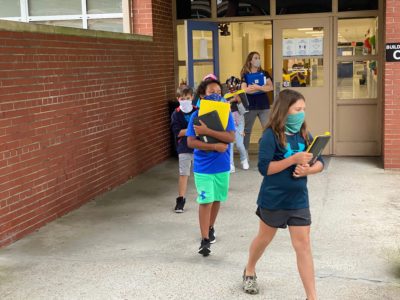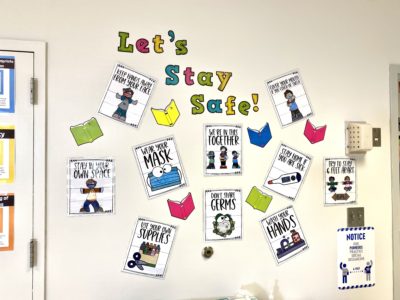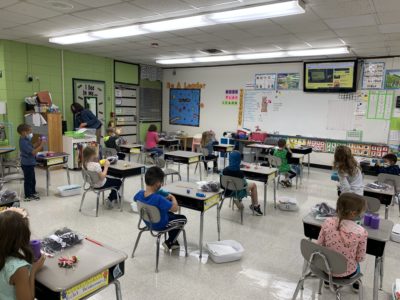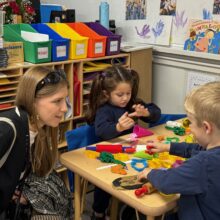On average, 36% of North Carolina students are learning completely remotely this school year, the Department of Public Instruction (DPI) reports. Across all virtual learning environments, which also include students learning remotely for parts of their week, 19% of students, on average, are not attending regularly — that is, at least four days a week.
DPI officials gave a snapshot Tuesday of how students are learning, and how often, in a school year disrupted by the COVID-19 pandemic. The information was provided in a presentation to the Joint Legislative Education Oversight Committee.
On average, 59% of North Carolina students are on rosters for in-person learning. In those in-person environments, 11%, on average, are not attending regularly, or at least four days a week.
Less than 1% of students, about 15,000, are unaccounted for this school year — meaning school systems do not know where they are.
These numbers are worrisome, said David Stegall, DPI’s deputy director of innovation. In a regular school year, he said, daily attendance is about 95%.
The numbers are fluid as districts change their models of instruction. Since the beginning of the school year, districts have chosen between fully remote (plan C) or hybrid models that combine remote and in-person learning (plan B). Starting in October, Gov. Roy Cooper allowed districts to open elementary schools for full-time in-person instruction (plan A).
Under any plan, districts have given families the option to learn remotely. Find out which plan each district has chosen here.
“Those students who are not there are missing a significant number of days, which will probably have an impact on pass rates, graduation rates, and such,” Stegall said.
As for students who are unaccounted for, that means districts did not receive a request to transfer records for those absent students to another school option, Stegall said. Districts are using social workers, counselors, and truancy officers to do home visits and contact friends and family to find out where students are.
“I’m relieved that it’s not higher than it is, but any number is a concern, so the districts are working through that challenge,” he said.
Legislators want a long-term plan
Committee members expressed concern about long-term impacts of learning loss on students and the state as a whole. Rep. Ashton Wheeler Clemmons, D-Guilford, raised three main areas of long-term implications: graduation rates, promotion rates, and the large drop in kindergarten average daily membership (ADM).
“If we’re not preparing now for what we’re going to do, all of those are going to be huge gaping holes in our system moving forward,” Clemmons said.
About 16,000 fewer kindergartners showed up in the ADM count for the first month of the school year compared with the start of last school year. Read more on ADM changes is in the stories below.
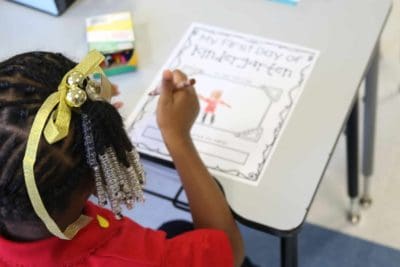
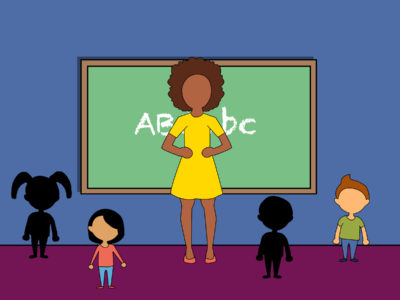
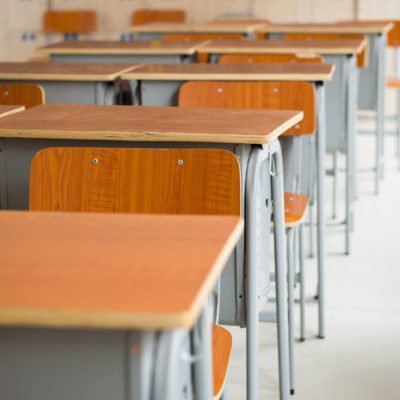
Freebird McKinney, the State Board of Education’s director of legislative affairs and community outreach, pointed to the North Carolina Education Corps, which is recruiting mentors, tutors, and counselor aides to help fill holes in learning. The initiative is a joint effort among the Board, the governor’s office, and school districts, and aims to train and deploy individuals by January. McKinney said 17 school districts have applied so far.
“Every single district is going to need forward thinking and planning on these huge major issues, and it sounds like we’re not there yet,” Clemmons said. “I understand that we’ve been reactionary, and we have to deal with what’s immediately in front of us, but as leaders for these districts across our state, we also need to have people forward thinking about what’s coming, or else these holes really will plague our state for a generation.”
At the end of the meeting, State Board Chair Eric Davis said the Board would return with a comprehensive plan.
“What COVID has done to our school system is not unlike what COVID has done to our economy and nearly every other aspect of the lives of North Carolinians,” Davis said. “It has landed unevenly across our students and schools.”
Comparing the pandemic’s crises to the Great Depression, he said public education reforms would be similarly necessary to meet the changing needs of students.
“This is going to require the same type of aggressive, statewide, coordinated strategy and new ways of thinking about the delivery of education, the preparation of our teachers, the training for our principal and superintendent leaders,” Davis said.
‘It’s about opportunity and equity’
Legislators also called for disaggregation of the attendance data by race, geography, and income. Several asked questions about internet access and the quality of remote instruction compared with in-person instruction.
“We’re concerned about affordable housing, livable wages, etc.,” said Sen. Todd Johnson, R-Union. “In 10 years, this group of folks that are going through this system, if we’re not serving these students, are going to be facing these issues … so how are we planning to get past this and not do a disservice to our students?”
Sign up for the EdDaily to start each weekday with the top education news.
An analysis of fall reopening plans across the state by Public Impact and EducationNC found districts with higher concentrations of students of color were three times more likely to choose to start the school year fully remote. Districts with the lowest student enrollment were three times less likely than the largest districts to have information online about how families can access Wi-Fi during remote learning (37% versus 10%).
The quality of remote instruction varies widely by district because of differences in resources, staffing, and access to affordable internet, Stegall said. Parents’ ability and capacity to help their children also varies.
“We’re widening gaps,” Stegall said. “We are creating a greater divide than we’ve ever had. It’s about opportunity and equity, and in the current environment, it will continue to grow.”
What does attendance mean this year?
Districts have varying methods of tracking attendance this year for online learners. The guidance document for this school year from DPI and the Board encourages districts to count remote students as present if a student completes daily assignments online or offline and/or “if a student has a daily check-in, a two-way communication, with the appropriate teacher(s).”
“In some districts, if a student logs in to do work, a teacher can see that they log on in their computer, and they’re counted present,” Stegall said. “What it doesn’t take into account is if they did work the whole day.”
The same analysis of fall reopening plans from Public Impact and EducationNC found a third of districts did not have a clear attendance policy.
Even concerning students who do show up for school, members returned to the three long-term issues Clemmons raised at the start of the meeting: graduation, grade promotion, and the effects of kindergartners missing this year.
Committee Co-Chair Rep. Craig Horn, R-Union, who will not serve in the General Assembly next year, told the legislators who will return to keep their focus on student outcomes.
“Kids that will graduate, are they graduating prepared for university, are they graduating prepared for the workforce, are they graduating prepared for the military?” Horn said. “The answer is no, no, and no. This has been a disaster for education.”
Editor’s note: Rep. Craig Horn serves on EducationNC’s Board.
Recommended reading
